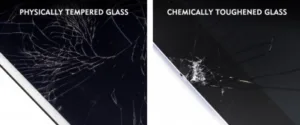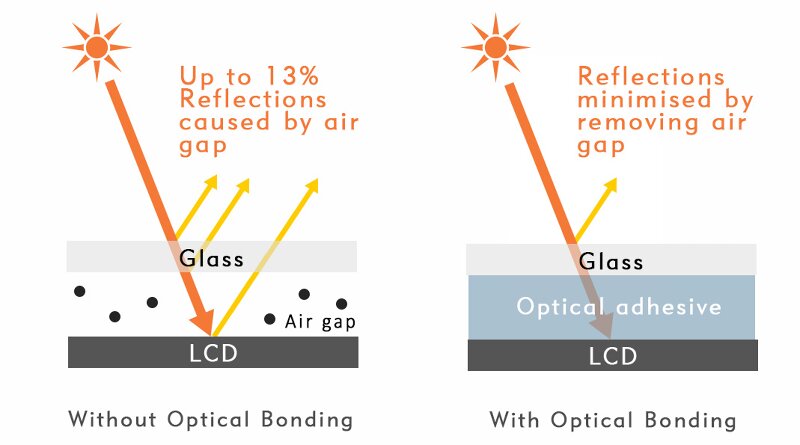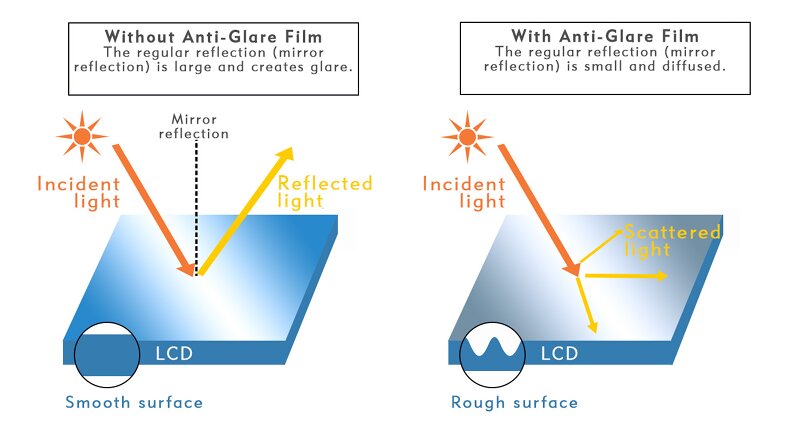LCD screens seem to be incorporated in almost every electronic product imaginable these days. Initially they were seen as an expensive luxury for top of the range products, but as manufacturing issues have been ironed out and new innovations have been made available to nullify some of their drawbacks, their performance has improved almost as fast as their price has dropped. However
LCD displays are very fragile and normally require a cover lens to be added in front of the display to protect it from damage and ensure that the data on display can be seen as clearly as possible.

Coverlenses are usually fabricated from glass. However, not all glass is equal and there are different treatments that can complicate the decision process. The two main types of glass used to manufacture cover lens each have their own properties and are used for different applications. Soda-lime is the most well-known type of glass and makes up around 90% of the glass used in the world. As would be expected from its popularity, it offers a well-balanced list of specifications that includes good mechanical strength, optical parameters, and temperature resistance. As it is easy to manufacture, it is very affordable.
The main alternative to soda-lime glass is aluminosilicate glass, which offers better performance than its competitor, but is much harder to produce and therefore can be up to 6 times more expensive. Because of its cost, it is usually only found in higher-end and niche applications where additional strength and protection is paramount, such as smart phones and AR/AV devices. The main features that make aluminosilicate glass attractive for cover lens use are its resistance to high temperature and chemical exposure, and its ability to withstand scratching.
Strengthening
Both types of cover lens glass are strengthened before use. There are two ways that glass is normally strengthened, and each has its own pros and cons. Chemical strengthening involves soaking the glass in a KNO3 solution at a temperature of 420oC. The sodium ions are replaced by larger Potassium ions on the surface of the glass. The larger surface ions are squeezed together to form a stress layer. After toughening, aluminosilicate glass has a typical strength of 600 megapascals (mpa) compared to soda-lime glass, which is generally in the region of 450 mpa. Aluminosilicate glass also keeps its shape and doesn’t bend after chemical strengthening, unlike soda-lime glass where its curve allows it some room to flex if the glass is pressurised. Chemically strengthened glass is the method seen in most applications including medical and automotive devices.
The second way of strengthening the glass is physical tempering, where the glass is slowly heated to around a peak temperature of 700oC and then cooled rapidly by high pressure air. The outer surface of the glass cools more quickly than the centre, which has the effect of compressing the edges as the centre pulls away from it, increasing the tension of the glass and therefore the toughness. Applications with thicker coverglass benefit from physical tempering such as outdoor entry systems, security communications and public signage systems where vandalism could occur.
Comparison table chemically vs physically strengthened
|
Chemically Strengthened |
Physically Strengthened |
|
|
Optical Performance |
***** |
*** |
|
Surface Stress Resistance |
***** |
**** |
|
Surface Smoothness |
***** |
*** |
|
Bendability |
*** |
* |
|
Sharpness of Shattered Glass |
*** |
***** |
|
Supporting IK ratings |
*** |
***** |
|
Average Cost |
$$ |
$ |
There is a difference in the two toughening methods when the glass is broken. The physically tempered glass breaks into small pieces without sharp corners, while the chemically strengthened glass shatters into sharper fragments, making physically tempered glass safer in that respect. Chemically strengthened glass has the advantage in the respect that it is thinner, stronger, smoother and offers better optical performance than physically toughened glass.
Glass Strengthening Processes and Advancements
Optical bonding
The cover lens has to be situated in front of the LCD display. It can be fixed in place with an air gap or be optically bonded to the LCD. While using an air gap is cheaper than optical bonding, it is inferior in almost every other way, especially if the display is to be used outside or in other areas where there is highambient luminance. The air gap causes repeat refraction and reflection between the three different components of the display (LCD, air gap, cover lens), meaning that some of the light from the display is reflected back to it, impacting the intensity and clarity of the image. Optical bonding involves filling the air gap with a resin, which bonds the lens and the display together. This allows the light to move through unhindered, and as more of the light from the display reaches the surface of the cover lens, the image is clearer and brighter. A second benefit is that optical bonding also allows external light to pass with very little being directly reflected and thus “absorbed” in the display cavity.
Optical bonding also helps in other areas. The resin can absorb shock to make the display module more rugged, and it provides a barrier that stops dust and water from penetrating between the cover lens and the display. It also stops condensation forming in the gap between the two.
Anti-glare coating
While optical bonding assists in the reduction of glare from the screen, it is also possible to use additional coatings to further reduce screen glare. The anti-glare coating gives the surface of the screen a matt effect that can diffuse light in multiple directions instead of directly reflecting it. However, the coating may also have an effect on the image being displayed as the light from that can be diffused at the same time. An excess of anti-glare coating will have a small impact on the contrast and vibrancy of the image, making it appear slightly dull. The anti-glare coating can be applied by either surface spray treatment or surface chemical liquid treatment.
Anti-reflective coatings
Anti-reflective coatings are another solution to stop light from external sources being reflected off the screen, which can make the display more difficult to see clearly. This technique works in a different way to anti-glare coatings. Anti-reflective coated glass uses the principle of optical thin film interference. Multiple layers of nano-optical materials are coated on to the cover lens surface by vacuum reactive sputtering, improving the transmittance of the glass and reducing surface reflectivity. Ordinary glass has a transmittance of 90% and a reflectivity of 8%. Anti-reflective coating boosts the transmittance up to 99%, so only 1% of the light is reflected. As well as cutting down the amount of light reflected, anti-reflective coating also stops effects such as ghosting and the whitening of the screen which happens when the screen is exposed to strong external light over a period of time. Minimising reflection is also important to users as it reduces the fatigue that is caused by light reflection on the eyes.
Other Treatments
As well as the treatments mentioned above, other methods can be used to provide different benefits to LCD displays. For example, A layer of nano-chemical material can be coated onto the surface of the glass to minimise its surface tension. This coating reduces the contact area between dust and the glass surface by 90%, making the glass hydrophobic, oil-resistant, and fingerprint-resistant, while keeping the screen clear and readable for a longer period of time. Alternatively, an optical film (O-film) polariser can help to make the display more readable from viewing angles that are not directly in front of the screen.
Summary
Each application has its own requirements from an LCD screen. These requirements could depend on the environment where the display will be situated, the user’s reading position or how durable the display has to be. Choosing the correct cover lens and treatments make it possible to tailor the display to the exact needs of each application and get the best possible optical performance out of every LCD display. (AP)
Dr Alexander Pang is an Application and Development Engineer with Anders Electronics PLC.





